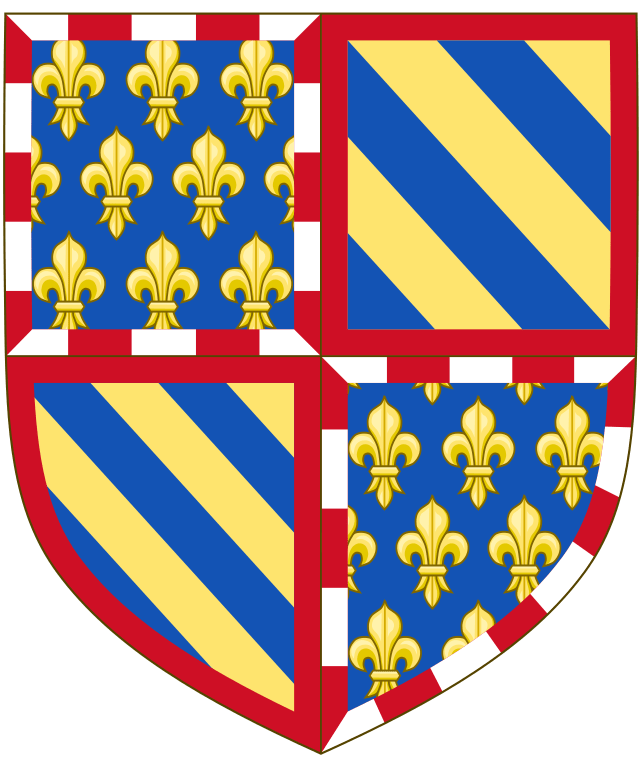Portugal’s rich history boasts a colorful cast of characters, from fearless explorers to visionary monarchs. But nestled amidst the tales of kings and queens lies a lesser-known dynasty that significantly shaped the nation’s early years: the House of Burgundy.
House of Burgundy, or Afonsine Dynasty, 1143-1383

From France to Iberia
This Burgundian lineage originated not in Portugal, but in neighboring France. In the 11th century, a younger branch of the Capetian dynasty, the House of Burgundy, established itself as a powerful force. One of their descendants, Henry, Count of Portugal, arrived in Iberia in the 11th century to fight alongside the Christian kingdoms against the Moors. His son, Afonso Henriques, would change the course of history.
The Key Figures of Portugal’s House of Burgundy
The House of Burgundy, though relatively short-lived, played a pivotal role in laying the foundation for the Portugal we know today. Here are some of the key figures who shaped the dynasty and the nation:
- Henry of Burgundy (1066 – 1112) was the bridge between France and Iberia. Henry, a French House of Burgundy descendant, arrived in Portugal to fight the Moors. He married Teresa, heiress to the County of Portugal, solidifying Burgundian influence in the region. Their son, Afonso Henriques, became the most significant figure of the dynasty.
- Afonso Henriques (1109 – 1185): The “Founder King.” Afonso Henriques, born in Portugal, declared himself King in 1139, officially establishing the Kingdom of Portugal. He expanded Portuguese territory through military prowess and strategic alliances, laying the groundwork for future conquests.
- Sancho I (1154 – 1211): The “Populator King.” Succeeding his father, Afonso Henriques, Sancho I focused on consolidating and stabilizing the newly formed kingdom. He encouraged the settlement and cultivation of captured lands, earning him the nickname “Populator King.”
- Afonso II (1211 – 1223): The Lawgiver King.” Afonso II continued his father’s work, promoting agriculture and trade. He established the Cortes, Portugal’s first parliament, demonstrating a commitment to representative government.
- Dinis I (1279 – 1325): The “Farmer King.” Dinis I is considered one of Portugal’s greatest monarchs. He earned the nickname “Farmer King” for his dedication to agricultural advancements. He also fostered the arts and sciences, establishing the University of Coimbra, a significant learning center.
- Afonso III (1248 – 1279): The “Border King.” Afonso III, son of Afonso II, ascended the throne after political unrest. He focused on securing Portugal’s borders, particularly in the south, where the conflict with the Moors continued. His most notable achievement was the conquest of the Algarve region in 1249. However, Afonso III played a crucial role in solidifying Portugal’s territorial boundaries and paving the way for future prosperity.
Afonso Henriques and the Birth of Portugal

Afonso Henriques, a man of ambition and unwavering determination, declared himself the first King of Portugal in 1139. This marked the official birth of the Portuguese nation. Under his reign, the Burgundians expanded Portuguese territory, laying the foundation for the future maritime empire.
A Legacy of Progress
Beyond territorial expansion, the Burgundian monarchs ushered in a period of cultural and economic prosperity. King Dinis I, known as “the Farmer King,” spurred agricultural advancements and fostered the arts. His grandson, Afonso II, established Portugal’s first parliament, the Cortes, demonstrating a commitment to representative government.
Beyond the Kings

While the kings were the figureheads, the House of Burgundy also included influential queens who played vital roles. For example, Afonso Henriques’ mother, Teresa, wielded considerable power as the heiress of Portugal. Additionally, princesses from the Burgundian lineage married into other European royal families, forging vital alliances.
The End of an Era
The Burgundian dynasty came to an end in 1385 with the death of King Ferdinand I, who had no male heirs. Though the dynasty itself was short-lived, its impact on Portugal was significant. The Burgundians established a strong foundation for the nation, setting the stage for future exploration and a flourishing Golden Age.
A Dynasty in Decline
Despite these successes, the Burgundian line eventually began to wane. Internal conflicts and a lack of male heirs led to the dynasty’s extinction in 1385. However, the Burgundian legacy continued to resonate. The Aviz dynasty, which rose to power after the Burgundians, would build upon their achievements, propelling Portugal into the Golden Age of Exploration.
Atypical Last Thoughts

Today, the influence of the House of Burgundy remains subtly woven into the fabric of Portuguese culture. The Burgundians played a crucial role in shaping Portugal’s identity, from the architectural marvels built during their reign to the spirit of independence they instilled. So, next time you explore Portugal, watch for the echoes of this once-powerful dynasty, forever etched in the nation’s history.




[…] The House of Burgundy or Afonsine Dynasty (1139-1383) […]
[…] whose reign marked a period of innovation, prosperity, and strategic foresight. As a member of the House of Burgundy, Dinis inherited a noble lineage and a legacy of governance and stewardship that shaped the […]